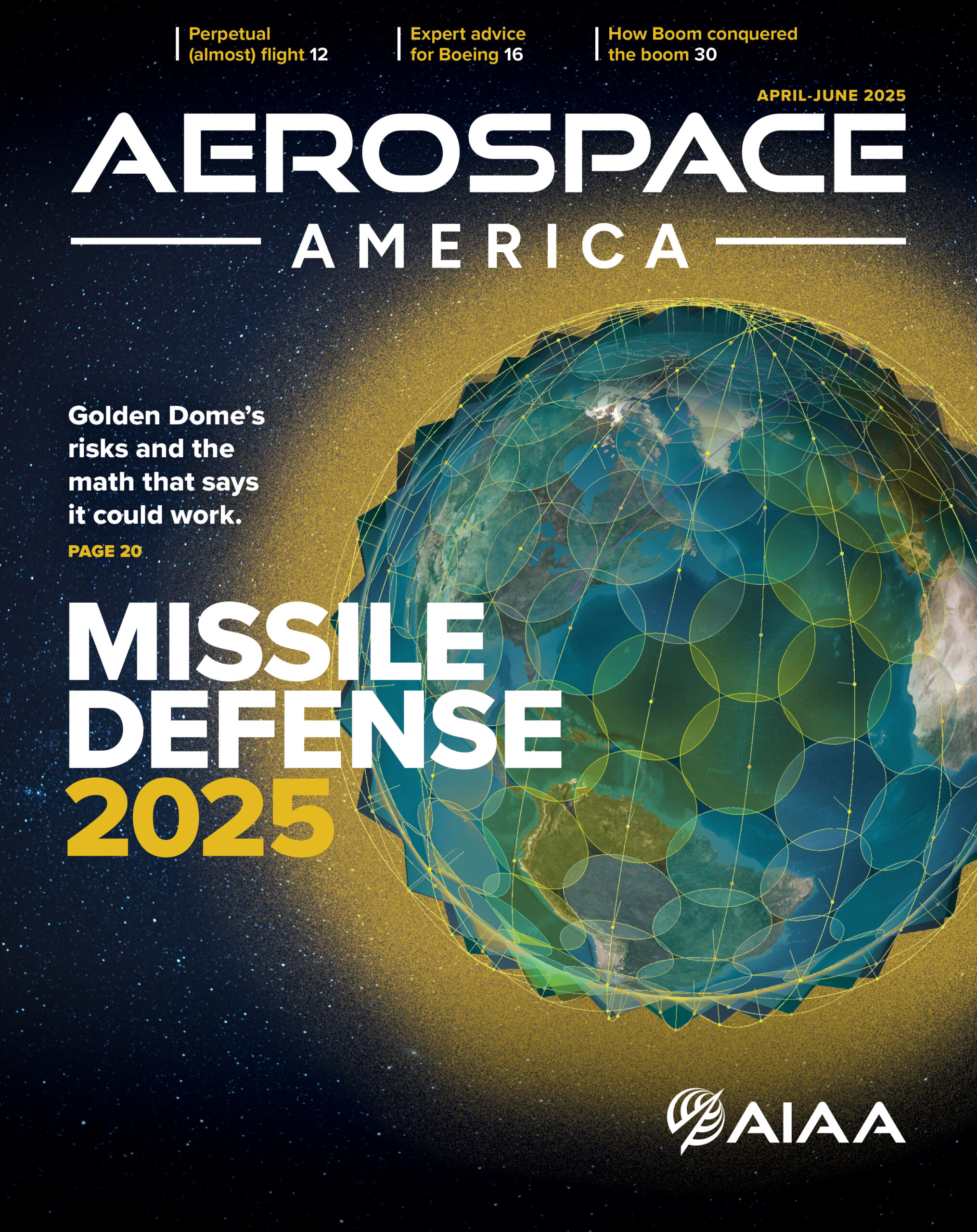Stay Up to Date
Submit your email address to receive the latest industry and Aerospace America news.

Ralph D. Kimberlin, Ph.D., respected experimental test pilot, engineer, and graduate professor, died on 28 November 2024. He was 84 years old.
Kimberlin graduated from the U.S. Naval Academy in 1963, and was commissioned as an officer in the U.S. Air Force. He did pilot training at Moody Air Force Base, achieving his first solo in a Cessna T-37. In 1964 at Eglin AFB, he was one of three officers testing weapons systems that included the AC-47 Gunship. This work led Kimberlin to combat evaluations of the aircraft in Vietnam. He also helped design engineer the AC-130 Gunship, recently used by the United States in Iraq and Afghanistan. In 1967 Kimberlin left full-time military service, but he remained in the Air Force Reserves for more than 30 years, retiring in 2000 as a colonel.
Kimberlin worked for aircraft manufacturers Cessna, Beech, Rockwell, and Piper. In 1974, Piper named him their chief of flight test and aerodynamics. In tandem, he earned a Master of Science in aerospace engineering from the University of Tennessee Space Institute (UTSI) in 1975. He knew that his success as a test pilot was tantamount to his engineering knowledge. As an experimental test pilot and aerospace engineer, he logged 9,300+ hours as a pilot across 250 types of aircraft, with 2,250 hours on certification projects that involved 25 first flights. He later earned his Ph.D. in aerospace engineering from the Technical University of Aachen, Germany (1991).
In 1979 Kimberlin became a professor at UTSI in flight test engineering, establishing an academic program for a Master of Science in aviation systems. The program grew to include a flight research center, a hangar, and a dozen airplanes considered flying classrooms. He collaborated with military, government, and civilian flight test programs, as well as working on his own flight testing and research. The U.S. Navy contracted him to test pilot the Ball-Bartoe Jetwing, the only blown-wing airplane in the world, which is now displayed at the Wings Over the Rockies Air & Space Museum.
To document some of what he had learned over his career, Kimberlin wrote Flight Testing of Fixed-Wing Aircraft (AIAA, 2003). The book covers performance, stability, and control for propeller-driven and jet aircraft. A final section covers hazardous flight tests, including two tests that forced him to bail out of the aircraft. The book had worldwide distribution and in 2010 it was published in Chinese.
After 27 years at UTSI, Kimberlin retired as an emeritus professor, and alumni distinguished service professor in 2005. He continued to work as a consultant test pilot and flight analyst for 17 more years on projects including the Liberty XL2 development and certification flight tests, the Cessna 208B with hellfire missiles and laser-guided rockets for U.S. Air Force Special Ops, and certification of the Embraer Phenom 300’s stabilized camera system positioned under the nose of the aircraft. In 2012, Kimberlin joined the Florida Institute of Technology to help them develop a flight test engineering graduate program. He served as a part-time professor and test pilot instructor during his 12-year tenure.
Among Kimberlin’s numerous accolades, the FAA awarded him the Wright Brothers Master Pilot Award in 2022, for his 50+ years of outstanding contributions to aviation safety. In 2014, the Society of Experimental Test Pilots honored him with the distinction of Fellow, their recognition for exceptional test pilots who have made significant contributions to the aerospace industry. After decades of service, AIAA appointed him as chairman emeritus of their Flight Testing Technical Committee.
Related Posts
Stay Up to Date
Submit your email address to receive the latest industry and Aerospace America news.



